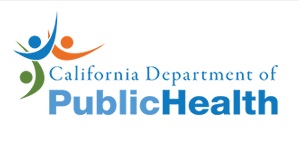Title Page
-
Conducted on
-
Prepared by
-
Location
-
Date of observations
-
Dialysis Nurse:
-
Dialysis Tech:
-
Nephrologist
-
Location of treatment:
Documentation
-
Patient Number (MRN or Encounter):
-
There is consent to place a vascular access device.
-
There is a consent for hemodialysis (according to organization policy).
-
Hepatitis profile performed prior to dialysis or at time of first treatment.
-
Pre-dialysis weight is documented.
-
The order for dialysis includes all of the following:
- Access (AVF, Catheter, etc.)
- Lenth of Treatment
- Blood flow rate
- Dialysate flow rate
- Dialyzer to be used
- Dialysate bath (k+, Ca++)
- Ultrafiltration
- Medications (heparin, other)
- Blood (if indicated)
-
There is a consent for blood (if ordered).
-
Protocols are documented on the record (i.e. if a hypotension protocol is ordered PRN, a copy of it is on the record or described in the order).
-
Completed dialysis flow sheet.
-
-
Care plans address dialysis.
-
All entries are timed, dated and authenticated.
-
Handoff communications are documented (if required by policy).
-
There is patient education documented regarding dialysis.
-
Comments:
Blood Administration Safety
-
The blood or blood product is matched to the order.
-
The blood or blood product is matched to the patient.
-
There is a 2 person verification process (or one person if accompanied by automated identification technology such as bar coding).
-
One individual conducting the ID verification in the 2 person verification process is the qualified person administering the blood.
-
The second person in the verification process is qualified to participate in the process as determined by the hospital.
-
The blood tag is completed and returned to the blood bank at the conclusion of the transfusion.
-
Vital signs during transfusion are monitored according to hospital policy.
-
There is a policy addressing reactions to blood and blood products.
-
Comments:
Arteriovenous fistula/graft (dis)cannulation
-
Mask worn properly.
-
Hand hygiene performed (staff).
-
Don new clean gloves.
-
Apply skin antiseptic and allow it to dry. (No contact with site after antiseptic)
-
Insert needles aseptically (mask/PPE).
-
Connect blood lines aseptically.
-
Remove gloves and perform hand hygiene.
-
To discannulate:<br>Mask worn properly.
-
Perform hand hygiene and don clean gloves.
-
Disconnect from blood lines aseptically and activate needle retraction device.
-
Clean gloves worn to compress site.
-
Clean bandage applied.
-
Gloves removed and hand hygiene performed.
Catheter connection and disconnection
-
Mask / PPE appropriately donned.
-
Hand hygiene performed.
-
New clean gloves donned,
-
Catheter hub scrubbed with antiseptic.
-
Hub allowed to dry.
-
Blood tubes connected aseptically.
-
Disconnection:<br>- Hand hygiene performed and clean gloves donned<br>- aseptically disconnect blood tubings from catheter<br>- new caps placed on catheter aseptically<br>- gloves removed<br>- hand hygiene performed.
Environmental Considerations
-
Quality controls performed (water - RO/DI)
-
Machines are cultured.
-
Appropriate cleaning process between patients (machines and environment)
-
Patient privacy observed.
-
Dialysis machines listed in hospital biomedical equipment inventory (even if owned by contractor).
-
Dialysis machines risk rated as critical in inventory (failure in use is potentially life threatening)
-
Dialysis machines PM'd on schedule
-
Dialysis machine repair records shared with hospital.
-
Appropriate storage used in the assigned dialysis area.
-
Comments:
Oversight & PI
-
Dialysis contractor reports quality controls to infection preventionist.
-
Outcome metrics reported to the hospital.
















